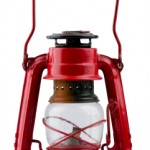Outdoor Lanterns: the Perfect Lighting Solution
 Lanterns have been around for a long time, as they are a large upgrade over any kind of open flame, such as a torch. They are protected and enclosed, with less chance of going out due to poor weather or accidentally starting a fire. They have been replaced in modern times largely with flashlights, hand-held torches, but even these are not always a better option than lanterns. Camping and other outdoor activities still focus much on lanterns as the mean to provide perfect light, though they are understandably used less indoors. Still, lanterns have many advantages over flashlights, and buyers would be well-advised to take these into consideration when making a purchase.
Lanterns have been around for a long time, as they are a large upgrade over any kind of open flame, such as a torch. They are protected and enclosed, with less chance of going out due to poor weather or accidentally starting a fire. They have been replaced in modern times largely with flashlights, hand-held torches, but even these are not always a better option than lanterns. Camping and other outdoor activities still focus much on lanterns as the mean to provide perfect light, though they are understandably used less indoors. Still, lanterns have many advantages over flashlights, and buyers would be well-advised to take these into consideration when making a purchase.
First, lanterns are much better for camping because they are protected. A good kerosene lantern will still work even during a rain, which cannot always be said for a flashlight. The flashlight, because of its electrical construction and dependence on batteries, can be damaged or even ruined in the rain. When camping or hiking, one cannot always guarantee good weather during the night. If one becomes lost in the woods at night and it begins to rain, the last thing one needs is for a flashlight to short out or die entirely because of water getting inside the casing. A lantern, with its protective walls and roof, can stave this off much better than a flashlight. Also, while some lanterns do in fact use batteries, many rely on other fuel sources, such as kerosene gas. Since they are not electric and don’t have the same amount of delicate wiring, lanterns can survive in the rain and snow.
The second thing that a lantern does more effectively than a flashlight is that it throws out an entire field of light, not just a long, straight beam. A flashlight may be good at illuminating some trees or finding something on the ground, but the user has to point the flashlight directly at what they want to see. There is very little run-off to the sides in terms of light. A flashlight is very focused. A lantern, on the other hand, is perfect for lighting up an area where friends can then sit and talk or play cards, all able to see within the lantern’s field of light. This is ideal for sitting outside or even within a tent. It is also better than a flashlight during a power outage, as a lantern in a living room can light up the whole room, something a flashlight could never do.
The third benefit of a lantern is that it has a carrying handle on the top that pivots with the movement of one’s hand. This makes it great for carrying around, as it will not bounce and point off in random directions as much as a flashlight, especially if one has to reach out and grab something — say, if one has tripped and is falling. A flashlight will point off into the sky, leaving the off-balance person stranded in the dark as they try to grab something to stay up. Furthermore, this handle can be used to hang the lantern from a hook or a tree branch. This means that one or more lanterns can be hung all around a yard or campsite, lighting everything effectively. It becomes much more enjoyable to sit around within this sphere of light than it would if flashlights with their focused beams were laid on the ground all around the same site.
There is a reason that flashlights have replaced lanterns in some cases, but in most, lanterns are still the ideal lighting solution. There are more versatile, tougher in the weather, and do not require truckloads of batteries to operate. Lanterns provide a much more friendly lighting feel, casting a glow out in all directions instead of a sterile white beam in one direction alone. They also look much more aesthetically pleasing, as a lantern carries with it some pleasing connections with the past. They are often designed to look elegant, and will improve the look of a setting in which they have been arranged to provide light, something a flashlight has no chance of doing. As far as outdoor lighting is concerned, they are the perfect solution.
